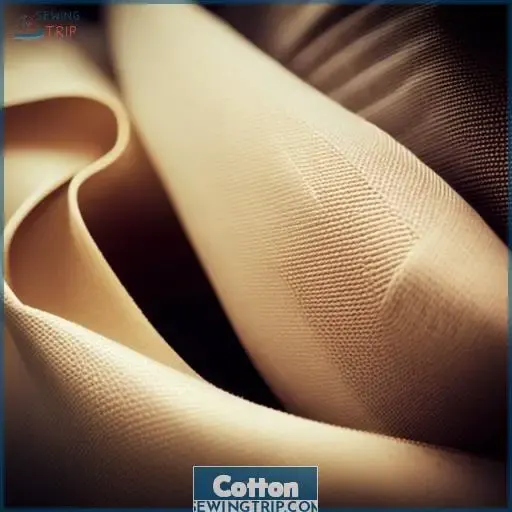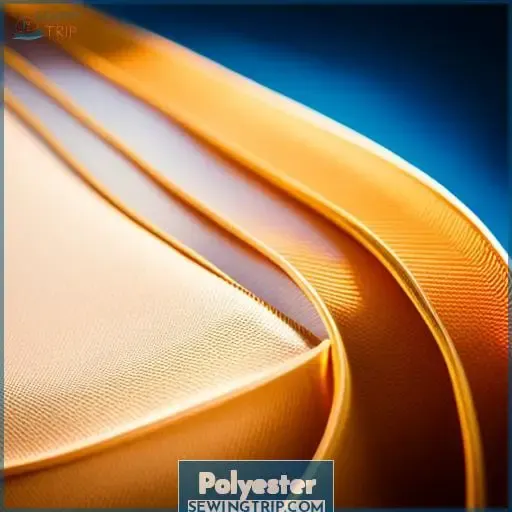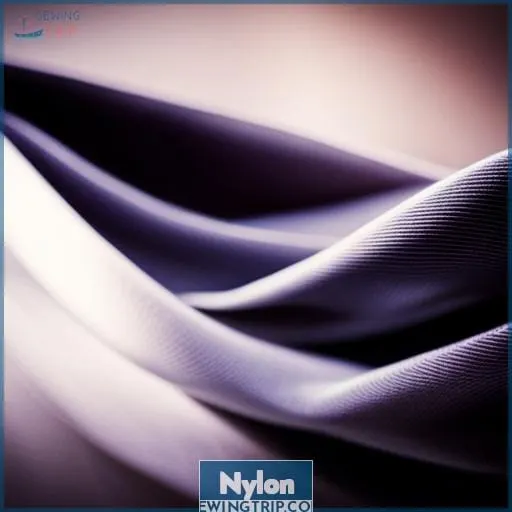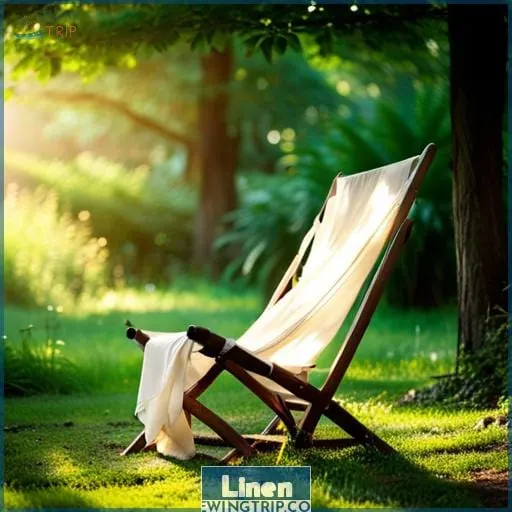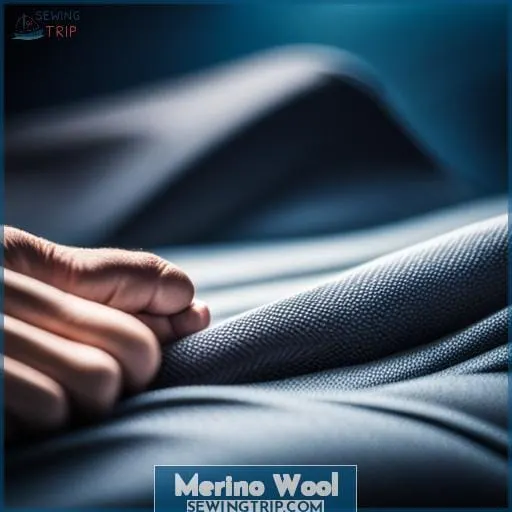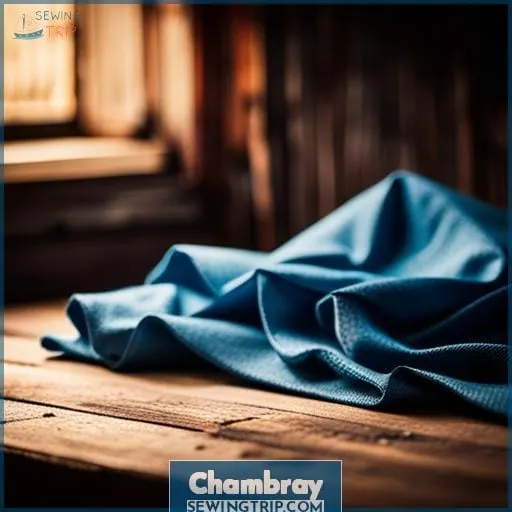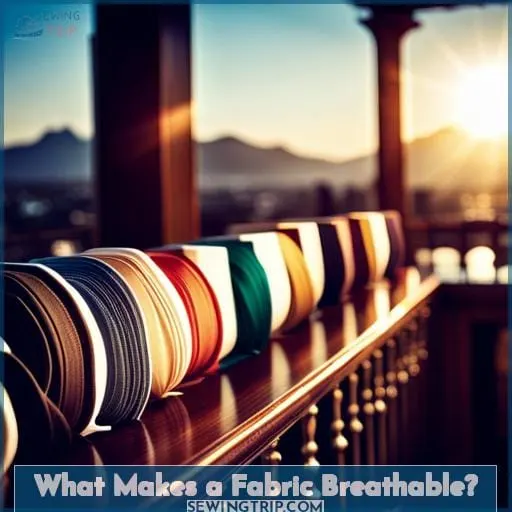This site is supported by our readers. We may earn a commission, at no cost to you, if you purchase through links.
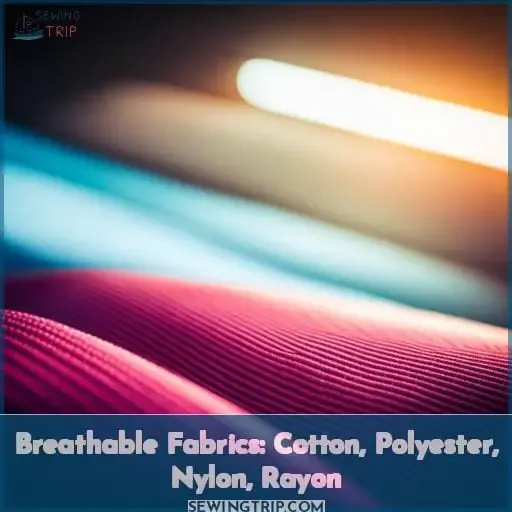 Ready to beat the heat and stay cool? From lightweight cottons to moisture-wicking merino wool, breathable fabrics are essential for staying comfortable in hot weather.
Ready to beat the heat and stay cool? From lightweight cottons to moisture-wicking merino wool, breathable fabrics are essential for staying comfortable in hot weather.
To help you find your perfect fit, we’re breaking down some of our favorite options — including cotton, polyester, nylon, rayon and more — so you can make an informed choice about which fabric best suits your needs.
With these top 10 picks for the most breathable materials around, along with tips on how they keep you cool and what environmental impact they have when produced or worn sustainably, arm yourself with knowledge before hitting up that summer sale!
Table Of Contents
Key Takeaways
- Cotton, linen, nylon, polyester, rayon, silk, micro modal, merino wool, and chambray are all breathable fabric options.
- Breathability is influenced by factors such as weave type, fabric weight, moisture-wicking properties, quick-drying capabilities, fit and ventilation, and sustainability.
- When choosing a breathable fabric, consider the activity and season.
- Eco-friendly breathable options include cotton, linen, micro modal, and merino wool.
Cotton
You’ll love how cotton’s soft, durable fabric allows air to pass through and moisture to evaporate, keeping you cool and comfortable. Cotton’s natural fibers create a breathable weave that’s perfect for clothing. It excels at absorbing moisture, making it ideal for hot and humid environments.
Cotton offers versatility – it can be used to make everything from lightweight shirts to cozy towels. Though cotton wrinkles easily, its durability makes it perfect for frequent washing.
Cotton works for all seasons, climates and activities. It provides next-to-skin softness that synthetic fabrics can’t match.
From jeans to t-shirts, cotton’s inherent breathability keeps you dry by wicking moisture away from your skin.
Polyester
Nylon and polyester wick moisture and dry fast. However, polyester retains odors while nylon doesn’t breathe as softly as cotton. Polyester’s tight weave makes it excellent at wicking sweat away from your skin to the fabric’s surface where it can evaporate quickly.
This makes polyester a popular choice for activewear as it keeps you dry during workouts. However, polyester also tends to retain odors more than other synthetics like nylon.
For maximum breathability, look for polyester clothing with mesh panels or other design features to promote airflow. The base polyester fabric wicks sweat while mesh inserts add ventilation. With proper care, polyester’s moisture management makes it a go-to for sweat-wicking activewear.
Nylon
With its moisture-wicking ability, nylon keeps you feeling cool and dry as you break a sweat. Tech-savvy nylon excels at wicking perspiration from your skin when you sweat. Its fast sweat-wicking prevents sticky, swampy workout clothes.
Nylon’s uncanny sweat absorption swiftly pulls moisture through the fabric and evaporates on your outer layer.
Nylon also resists bacterial odors better than natural fibers like cotton and wool. From workout shirts to yoga pants, nylon activewear whisks away sweat during high cardio sessions. Though polyester can be sweat-wicking too, nylon’s superior strength withstands constant washing.
Rayon
You’ll love the silky softness and breathability of rayon. Rayon is a semi-synthetic fabric made from regenerated cellulose fiber. It’s moderately moisture-wicking, though not as effective as synthetics. The benefit is the luxurious, lightweight drape that makes it perfect for flowy blouses and dresses in summer.
Compared to cotton, rayon resists pilling and shrinking. It’s more affordable than silk and often blended with spandex for stretch.
However, rayon scores lower on sustainability. Look for brands using sustainable wood sources and processes that capture harmful byproducts. For hot humid days, rayon’s breathability and quick-drying performance make it a go-to for reducing stickiness.
Pair it with a natural fiber like organic cotton or merino wool to balance absorbency with moisture wicking.
With smart layering and fabrics, you can stay cool while making sustainable choices.
Linen
Your skin sings when linen’s exceptional breathability keeps you comfy in the heat.
- Softens with age and wear
- Naturally antimicrobial
- Absorbs moisture well
- Durable and long-lasting
- Wrinkles easily
Linen is ideal for warm weather as it’s one of the most breathable fabrics. It absorbs and releases perspiration quickly, keeping you cool and dry. Linen blended with fabrics like cotton or silk helps reduce wrinkling while retaining breathability.
For hyperhidrosis sufferers, linen can help manage excessive sweating. Pair it with moisture-wicking fabrics like micro modal undershirts to prevent sweat stains. With proper care, linen can last for years. Choose loose, lightweight linen styles to stay breezy in the heat.
Silk
Discover the luxurious feel and lightweight nature of silk, perfect for those seeking a breathable fabric option with a touch of elegance.
Silk is prized for its softness and breathability. The protein fiber allows heat to escape while feeling cool against skin. However, silk requires delicate care: hand wash or dry clean it only, line dry to prevent damage.
Consider merino wool or chambray for lower maintenance breathable fabrics. Silk also lacks moisture wicking properties. Pair it with quick-drying base layers for active pursuits. For formal occasions, silk remains a go-to.
Flowing silk dresses and blouses allow air to circulate. Sheer silk fabrics, like chiffon and charmeuse, provide optimal breathability.
Explore innovative silk textile developments, like antimicrobial silk, for the ultimate in comfort and protection.
Micro Modal
Micro modal is the perfect fabric for warm weather activities. With its ultra-soft feel and superior moisture management, this semi-synthetic fabric made from beechwood pulp offers 50% more absorbency than cotton.
You’ll love how it wicks sweat away from your skin, keeping you cool and dry even on hot, humid days.
Look for micro modal in:
- Soft T-shirts and underwear
- Lightweight lounge and sleepwear
- Yoga pants and athletic wear
- Scarves and accessories
Proper care allows micro modal garments to maintain their shape and feel over many wears. And compared to cotton, producing modal emits far less CO2, giving it a smaller environmental footprint. So beat the heat in sustainable style with micro modal’s unrivaled softness and breathability.
Merino Wool
Merino wool’s breathability and moisture-wicking make it perfect for cooler seasons. Merino wool offers many benefits as a breathable fabric. It naturally wicks moisture away from the body and dries quickly, keeping you comfortable in cooler weather.
To care for merino wool, wash gently in cold water and lay flat or hang to dry. Avoid hot water or heat drying to prevent shrinkage. Merino wool layers well under coats and jackets when the temperature drops. It also works as a breathable base layer that keeps you dry during active pursuits like hiking or skiing.
The softness of merino wool makes it comfortable against the skin. Overall, merino wool’s natural performance properties make it an ideal breathable fabric choice as temperatures cool.
Chambray
Chambray is a wonderful choice for breathable fabrics in warm weather. The lightweight plain weave of chambray allows for great airflow while still providing opacity.
When styling a chambray shirt, keep a few tips in mind:
- Roll up the sleeves for a more relaxed look perfect for summer.
- Pair it with white or light wash denim on bottom for a casual chic outfit.
- Dress it up by tucking into a skirt or trousers and add some jewelry.
- Cuff the sleeves and layer under a blazer or cardigan for an office-ready ensemble.
Chambray stands up to many wears and washes while retaining its lived-in look. To care for chambray, wash in cold water and tumble dry low or hang dry to maintain the fabric’s integrity. With proper care, chambray makes an ideal choice for breathable, durable summertime apparel.
What Makes a Fabric Breathable?
Breathable fabrics allow your body moisture to evaporate so you stay cool. The breathability depends on fabric weight, knit type, moisture management, fit, and sustainability standards for fast drying performance without excessive heat buildup.
Fabric Construction and Weight
The weave and heft of a fabric determine how well air flows through it. An open weave allows more airflow and is more breathable. A tight weave restricts airflow and is less breathable. Similarly, lightweight fabrics are more breathable while heavy fabrics allow less airflow.
Innovative fabric selection, cooling technology, and weaving techniques provide optimal sweat management through breathable innovations.
Thinner Materials and Open Knits
You’d find thinner cotton tees and open-weave shirts make it easier for air to pass through and cool you down. Broadcloth, poplin, voile, lawn, batiste, cheesecloth, muslin, gauze, challis, and crepe are prime picks for hot and humid days.
Their open and loose weaves promote airflow while wicking moisture. Opt for breezy open knits in linen, cotton, rayon, or blends when seeking lightweight breathability.
Moisture-Wicking and Quick-Drying Properties
You’ll find moisture-wicking fabrics pretty helpful for sweaty days.
- Polyester fibers move moisture from the skin to the fabric’s outer layer.
- The moisture then evaporates, cooling your body temperature down.
- This wicking technology keeps you dry during workouts by pulling sweat away.
- A quick-dry performance means less wet clinginess and discomfort.
- Fabrics treated with a wicking finish excel at sweat management and drying.
Fit and Ventilation Features
Want to stay cool? Opt for breathable fabrics with mesh panels or air vents. Seek activewear and relaxation pieces cut from eco-friendly, moisture-managing fabrics. Well-ventilated garments in looser fits keep skin dry as you move. For workouts, form-fitting tops and bottoms with strategic mesh panels circulate air while you break a sweat.
Thoughtfully designed, breathable fabrics and smart construction provide temperature regulation and comfort.
Environmental Impact and Sustainability Standards
Pondering environmental impact when procuring breathables, look to bluesign and organic cotton to do right by Mother Earth.
- Bluesign® standard
- Global Organic Textile Standard (GOTS)
- Organic Content Standard (OCS)
- Cradle to Cradle CertifiedTM
- OEKO-TEX® Standard 100
Consider textiles fulfilling sustainability benchmarks. Endorse brands practicing accountable sourcing and manufacturing.
Conclusion
From natural materials like cotton and linen to synthetics like nylon and polyester, the list of breathable fabrics is long and varied. But what really makes a fabric breathable? It’s all about the construction and weight of the material, the moisture-wicking and quick-drying qualities, and even the fit and ventilation features.
Choosing breathable fabrics involves considering the environmental impact and sustainability standards, like bluesign® and Organically Grown Cotton. Whatever the activity, there’s a breathable fabric to suit every need – from sweat-absorbent chambray for the summertime to the wool runners from Allbirds® for warmth in winter.
With so many options, it’s never been easier to select the fabric that is best for you.

